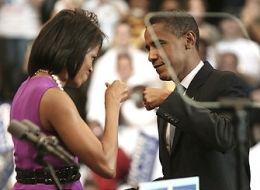Gary Chapman and Paul White are the authors of The 5 Languages of Appreciation in the Workplace. Their book discusses why appreciation is one of the most important elements of employee motivation and satisfaction. The Five Languages of Appreciation are based on the Five Languages of Love, which is why they include Physical Touch, although physical touch is a tricky proposition in any workplace.
As it turns out, very few workers (almost none) identified physical touch as even part of how they seek or show appreciation in the workplace. As more and more human resources professionals educate companies on the hazards of sexual harassment and cultural differences in how people perceive touch, it’s not surprising that very few workers or managers think of touch to say thank you.
Despite all our evolution, we humans are creatures of the senses, so touch can still be a very powerful method of communication between us. As a general rule, extroverts are more comfortable than introverts with touch, as are women more so than men. As a woman, I have received and given hugs, high fives, and other brief touches in the workplace. Almost everyone I know instinctively knows the border between neutral touching and inappropriate or uncomfortable contact, and I can honestly say that I’ve never had a moment that crossed the line for me.
There are times, in fact, when touching is a real and human response. When you are delivering difficult news or requesting a favor that is going to require a huge effort, a brief touch on the shoulder or arm can be a powerful way to connect and create a bond. As with all the other languages of appreciation, the way to tell whether touch will work for someone is to watch them in action. If they’re a toucher, chances are they value touch in return.
A 2010 study published in the journal Psychological Science reported on a series of experiments involving touch. According to one study, 67 men and women were asked to choose between a cash payoff and a risky gamble and then touched on the shoulder and back by male and female researchers. The researchers Jonathan Levav and his co-author Jennifer Argo of the University of Alberta in Canada, found that “both sexes were more likely to select gambles with no guarantees of a payoff if they had been made to feel more comfortable, especially if touched by a woman.” Apparently, what we feel when touched is deeply rooted in our collective psyches from infancy.
Adding just a moment or extra contact to a standard handshake can send a powerful bonding message. The two-handed handshake or the shoulder pat during the handshake intensify the emotion you convey through an otherwise neutral gesture. When in doubt, choose the fist bump. The Obamas made it cool in 2008.


